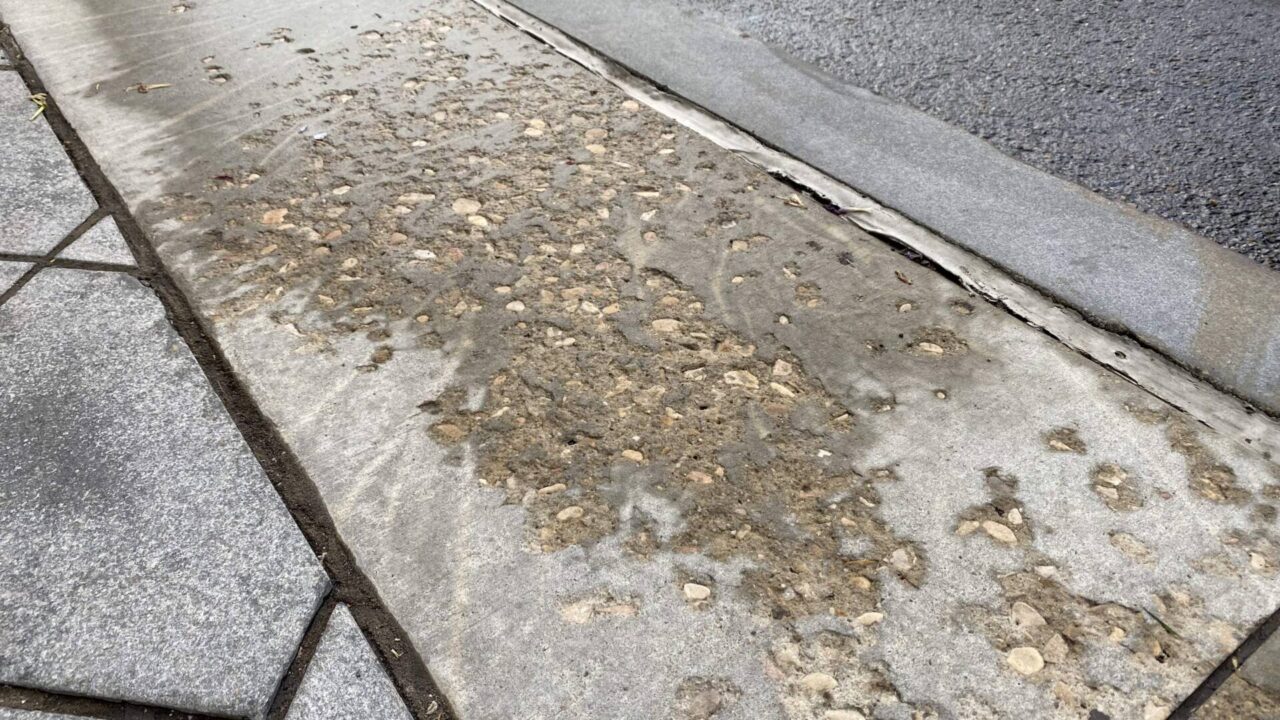
Salt might be great for seasoning your fries 🍟—but it’s a real menace when it comes to driveways, sidewalks, patios, and building exteriors. Salt residue and stains can leave white crusty buildup, discolor concrete, corrode metal, and shorten the life of exterior surfaces.
Whether it’s rock salt from winter deicing or salty sea air near coastal properties, power washing is one of the most effective ways to tackle this stubborn problem. In this guide, we’ll explore why salt residue forms, how it impacts your surfaces, and how to remove it properly using power washing. 🧽💦
🌬️ What Causes Salt Buildup?
Salt stains generally come from two main sources:
1. Deicing Salt in Winter
In colder climates, rock salt is spread on roads, sidewalks, and driveways to melt ice. As people walk or drive over it, salt gets tracked and splashed onto nearby surfaces.
2. Sea Air and Coastal Exposure
Homes near the ocean are exposed to salt in the air, which settles on exteriors over time. This can lead to chronic white residue buildup and corrosion on surfaces.
🚨 Why Salt Stains Are More Than Just Ugly
Salt isn’t just cosmetic—it can be destructive if left untreated:
- Concrete Deterioration: Salt attracts moisture, and over time, this combination can lead to spalling—where pieces of concrete flake off. 🧱
- Rust and Corrosion: Salt speeds up oxidation on metal railings, light fixtures, and siding components. 🧲
- Paint Damage: On painted surfaces, salt can cause bubbling, cracking, and fading. 🎨
- Surface Discoloration: White crusty marks ruin curb appeal and can become permanent if ignored.
So, if you’re noticing white spots, streaks, or crusty buildup—it’s time to act fast.
💧 Why Power Washing Works
Salt is water-soluble, meaning it dissolves in water. But standard garden hoses usually don’t apply enough force to break up hardened salt deposits or clean textured surfaces effectively. That’s where power washing comes in:
- High pressure blasts away salt stuck in pores, cracks, and surface grain
- Heated water (if available) can dissolve thicker salt crusts faster
- Detergents can help neutralize and remove residue completely
Power washing restores surfaces to their clean, pre-salt condition—without causing damage when done properly. 💪
Browse Amazon Here For Popular Pressure Washers And Accessories
🛠️ Step-by-Step: How to Power Wash Salt Residue the Right Way
✅ Step 1: Clear the Area
Remove vehicles, outdoor furniture, planters, and anything else that might be in the way. Sweep off any loose debris.
✅ Step 2: Choose the Right Nozzle
Use a 25° or 40° spray tip for wide, even coverage. Narrow tips can etch surfaces or leave streaks.
✅ Step 3: Pre-Treat with Detergent
Use a detergent that’s designed to:
- Break down salt
- Lift residue from porous surfaces
- Protect surfaces from flash corrosion
Let it sit for 5–10 minutes but don’t let it dry.
✅ Step 4: Rinse with Medium Pressure
Apply medium pressure (1,500–2,500 PSI) to concrete, brick, or pavers. For softer surfaces like wood or vinyl, use lower pressure and keep the wand at a distance.
Use overlapping horizontal passes and work your way across the surface for a uniform clean.
✅ Step 5: Rinse Again (if needed)
In areas with stubborn salt stains, apply a second round of detergent and repeat the rinse. This is common on driveways or areas with months of buildup.
⚠️ Important Tips to Keep in Mind
- Don’t use high pressure on painted surfaces — it can strip paint and spread residue
- Avoid dry brushing — scrubbing dry salt into the surface can cause scratches
- Protect nearby plants — salt and detergent runoff can damage landscaping 🌿
- Use warm or hot water if possible — it dissolves salt faster than cold water
🧪 Optional: Use a Salt Neutralizer
For areas that receive regular salt exposure, you might consider applying a salt neutralizer after power washing. These products chemically break down salt ions and prevent them from re-crystallizing.
They’re especially helpful in:
- Parking garages
- Coastal commercial buildings
- Sidewalks near busy roadways
- Basements or garages prone to tracking
🧰 When Should You Power Wash Salt Buildup?
Here’s when you should consider scheduling a salt removal session:
- Late Winter/Early Spring – After the last snow, to remove deicing salt
- Late Summer (coastal homes) – To clean accumulated ocean salt before winter
- Before painting or sealing – Always remove salt first
- As needed – When white streaks or stains appear
👷 Should You Hire a Pro?
If you’ve got large surface areas, commercial properties, or delicate materials, hiring a professional might be the best route. Pros use commercial-grade power washers and know how to:
- Adjust pressure to avoid damage
- Use safe, eco-friendly detergents
- Apply post-wash sealants or neutralizers
- Ensure proper runoff and drainage
🏁 Final Thoughts
Salt stains are one of those sneaky maintenance issues that creep up on you—but they don’t have to stick around. With the right tools and technique, power washing is a safe and powerful solution to restore surfaces to like-new condition. 🚿🧽
Whether you live in a snowy state or a beachside town, don’t let salt eat away at your home or business. Clean it up, seal it off, and enjoy the clean, safe surfaces you deserve. 💦🏠
Browse Amazon Here For Popular Pressure Washers And Accessories



